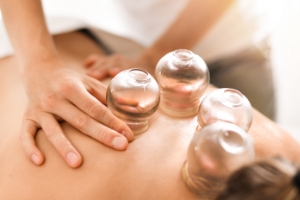No products in the cart.
Herbal ANG
CLINICAL APPLICATIONS
- Pain: acute or chronic
- Pain: dull, sharp, stabbing, numbing, burning, and fixed, moving, or radiating
- Pain of skeletal and smooth muscles
WESTERN THERAPEUTIC ACTIONS
- Potent analgesic effect of relieving pain
- Strong anti-inflammatory effect of reducing swelling and inflammation
INGREDIENTS
- Dang Gui (Radix Angelicae Sinensis)
- Mo Yao (Myrrha)
- Ru Xiang (Gummi Olibanum)
- Sheng Ma (Rhizoma Cimicifugae)
- Yan Hu Suo (Rhizoma Corydalis)
FORMULA EXPLANATION
“Where there is pain, there is stagnation. When stagnation is cleared, so will the pain.” For traditional Chinese medicine practitioners, this is one of the most important fundamental principles for pain treatment. Herbal ANG is designed as an adjunct formula to relieve severe pain. It can be used alone or with other procedures for pain in the body.
Yan Hu Suo (Rhizoma Corydalis) is the strongest and the most effective herb in Chinese herbal pharmacopeia to relieve pain. It enters Xue (blood) and qi (energy) levels to effectively invigorate blood circulation, regulate qi and relieve pain in the chest, abdomen, and limbs. It is practical to alleviate pain in the visceral organs and the musculoskeletal system. To enhance the analgesic effect of Yan Hu Suo (Rhizoma Corydalis), Ru Xiang (Gummi Olibanum), and Mo Yao (Myrrha) are added to Herbal ANG. This pair of herbs are often synergistically used together to relieve a wide range of pain caused by qi or blood stagnation, trauma, or arthritic syndrome. Dang Gui (Radix Angelicae Sinensis) tonifies and moves blood. Finally, Sheng Ma (Rhizoma Cimicifugae) is a channel-guiding herb. It moves upwards and outwards and has a dispersing nature, which helps break up stagnation and relieve pain.
In short, Herbal ANG is a highly effective formula for relieving pain. It can be used individually or in combination with another formula for pain at a specific location.
Yan Hu Suo (Rhizoma Corydalis) is the strongest and the most effective herb in Chinese herbal pharmacopeia to relieve pain. It enters Xue (blood) and qi (energy) levels to effectively invigorate blood circulation, regulate qi and relieve pain in the chest, abdomen, and limbs. It is practical to alleviate pain in the visceral organs and the musculoskeletal system. To enhance the analgesic effect of Yan Hu Suo (Rhizoma Corydalis), Ru Xiang (Gummi Olibanum), and Mo Yao (Myrrha) are added to Herbal ANG. This pair of herbs are often synergistically used together to relieve a wide range of pain caused by qi or blood stagnation, trauma, or arthritic syndrome. Dang Gui (Radix Angelicae Sinensis) tonifies and moves blood. Finally, Sheng Ma (Rhizoma Cimicifugae) is a channel-guiding herb. It moves upwards and outwards and has a dispersing nature, which helps break up stagnation and relieve pain.
In short, Herbal ANG is a highly effective formula for relieving pain. It can be used individually or in combination with another formula for pain at a specific location.
BACKGROUND
Pain is the most common reason for physician consultation in the United States. Pain is the unpleasant feeling often caused by intense or damaging stimuli, such as burning a finger or stepping on a sharp object. Acute pain is a beneficial and necessary warning signal for survival – it alerts the individual to withdraw from harmful situations to protect a damaged body part. At the same time, it heals and avoids similar experiences in the future. Chronic pain, however, may persist after the stimulus has been removed or after the body has recovered. In these cases, chronic pain can significantly interfere with a person’s quality of life and general functioning, causing complications such as anxiety, stress, depression, anger, fatigue, sleep disturbance, immune suppression, and many others. Because chronic pain affects the body and the mind, effective treatment requires treatment of psychological and physical aspects of the condition.






